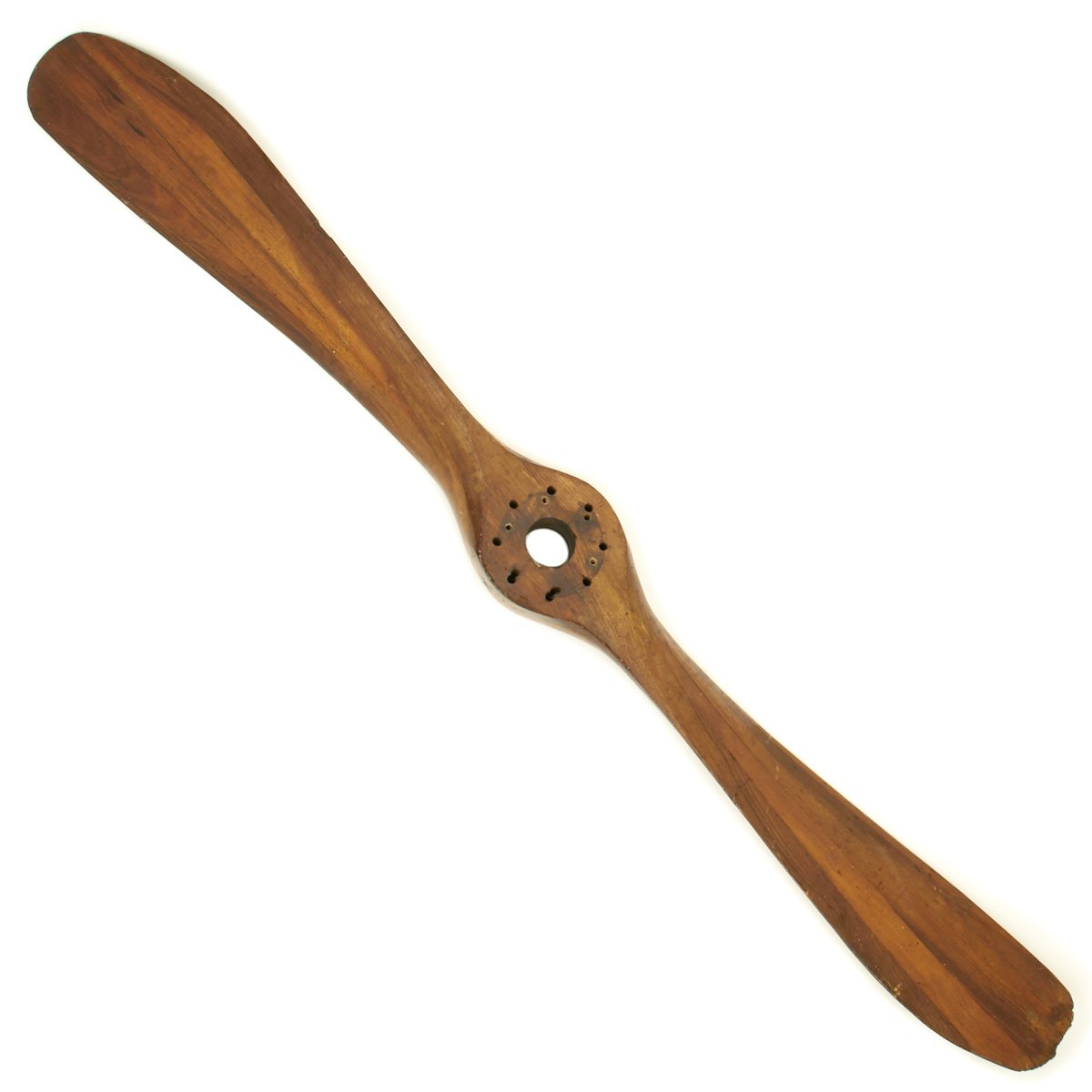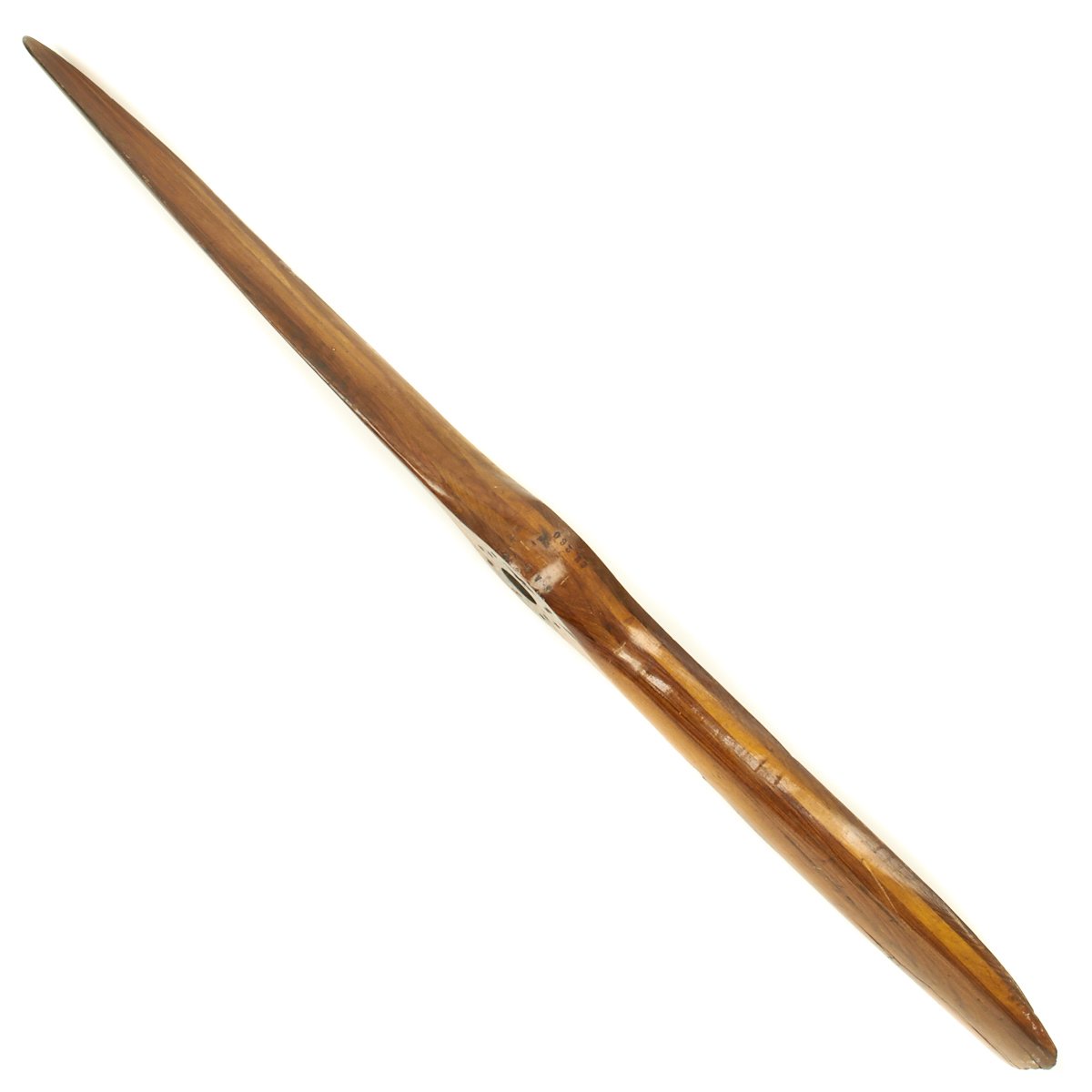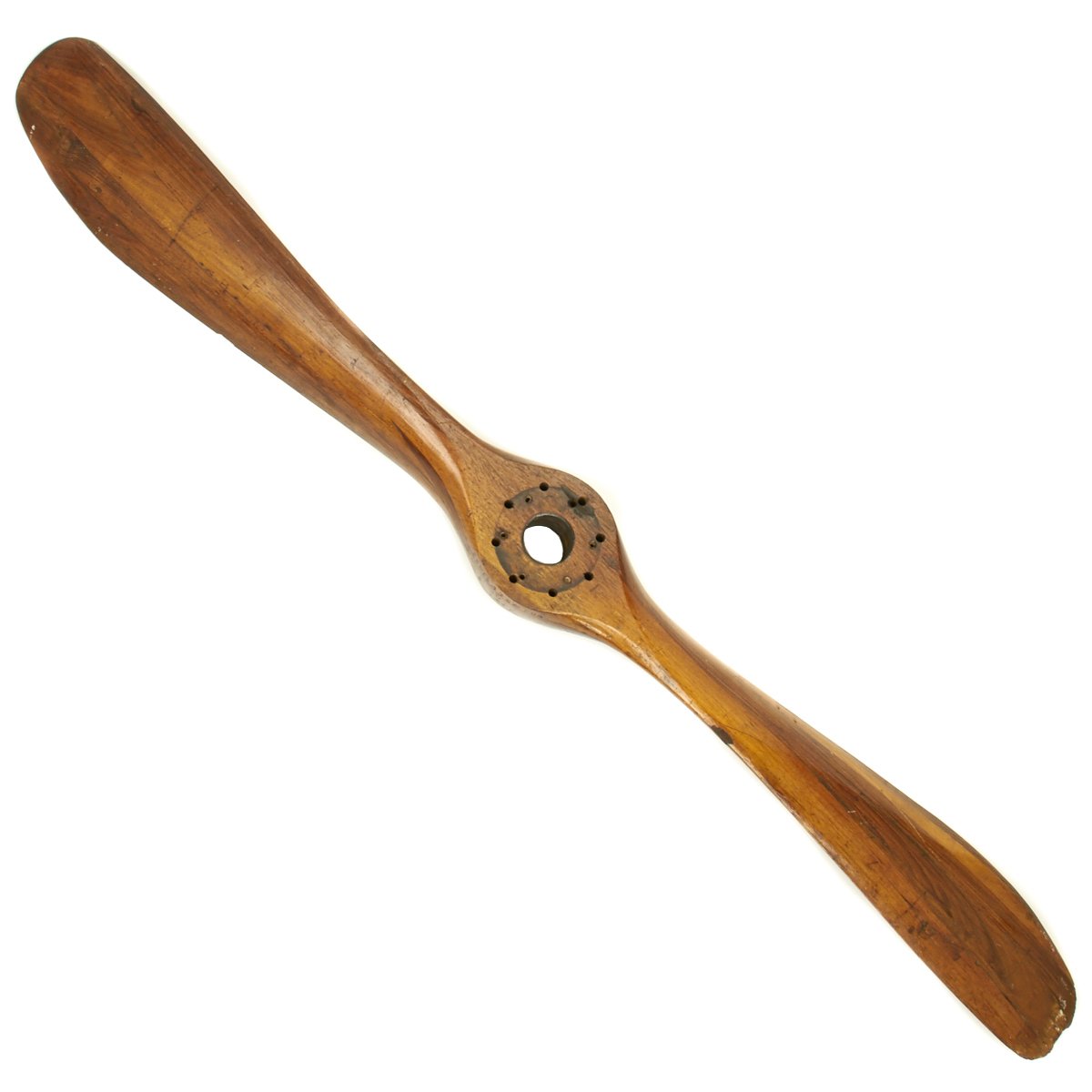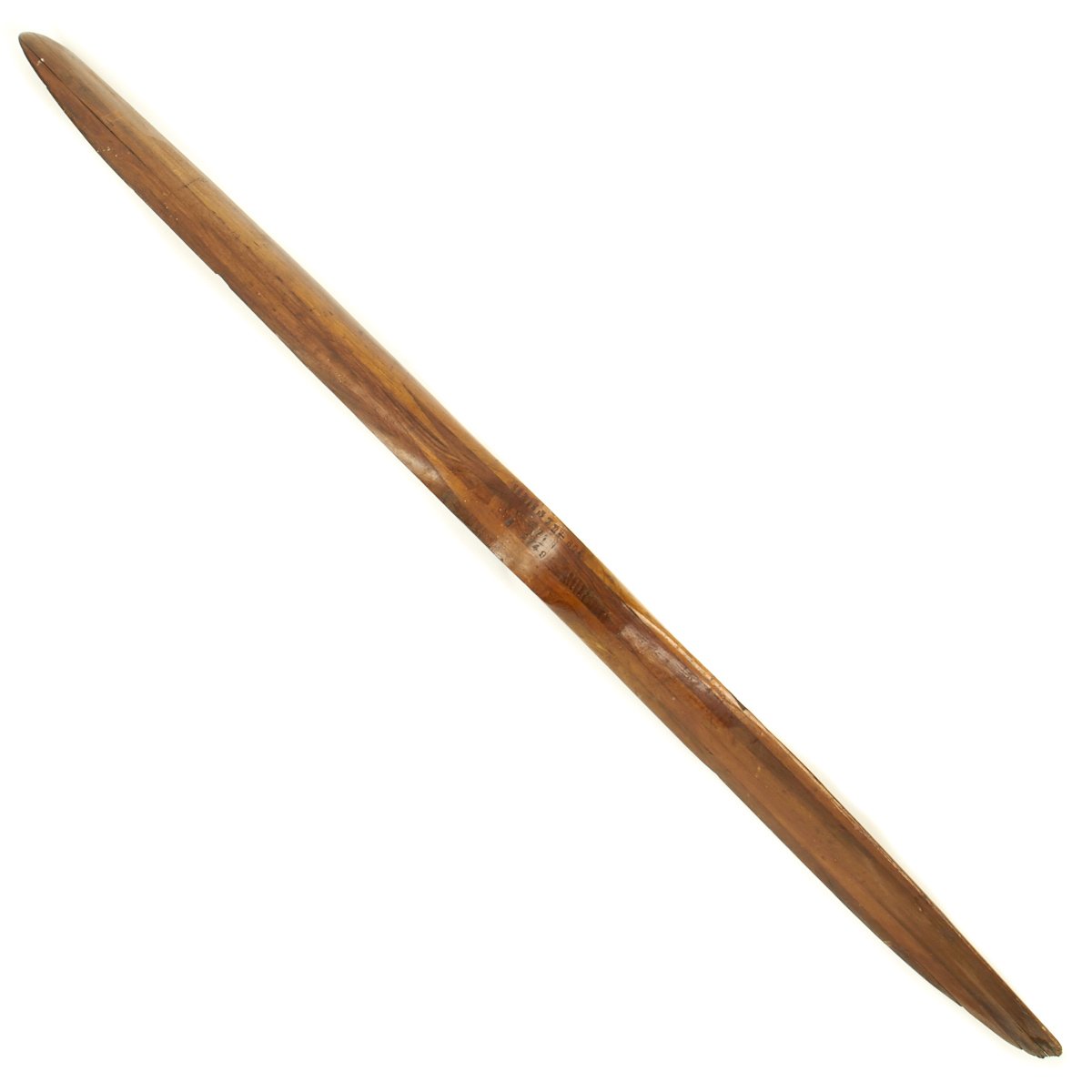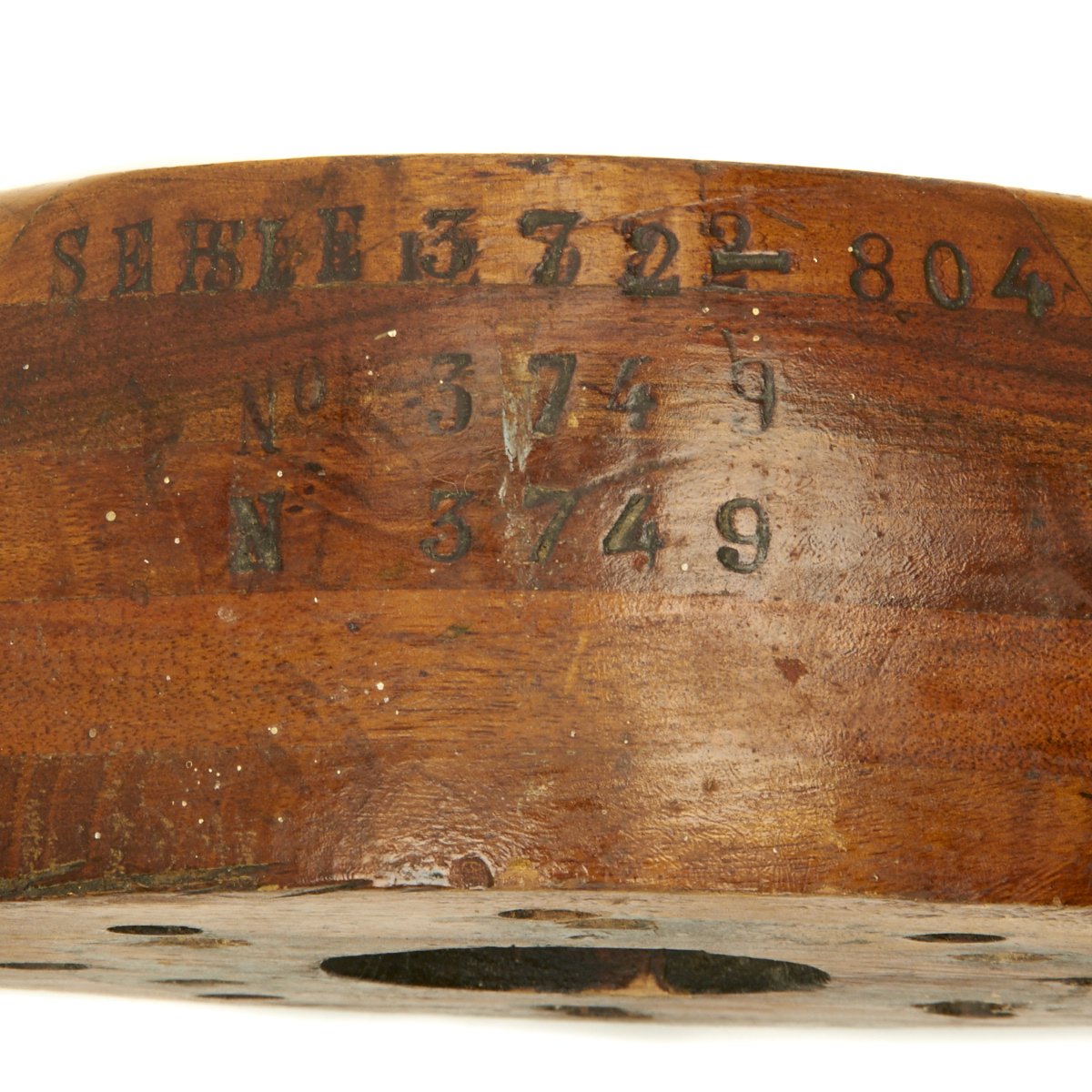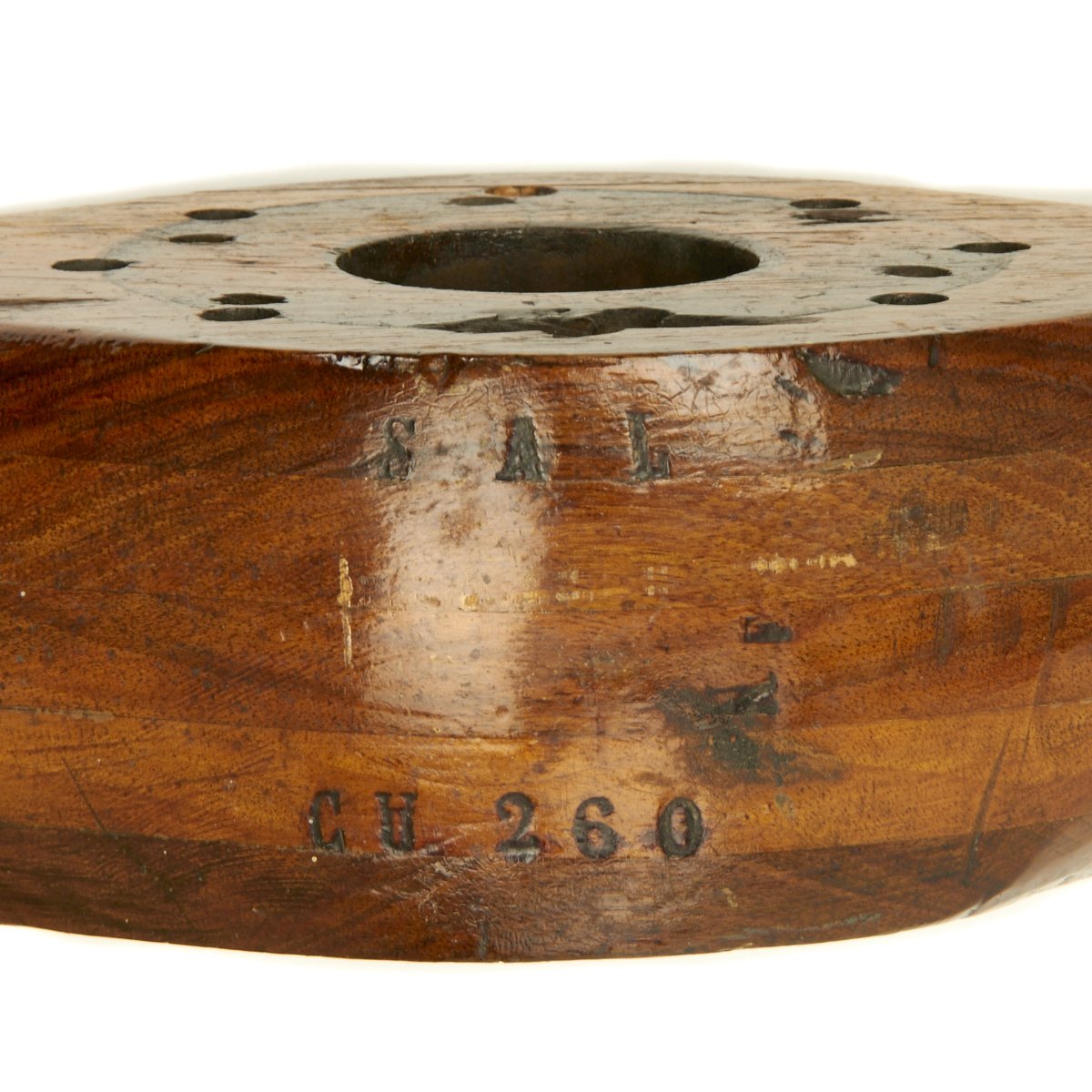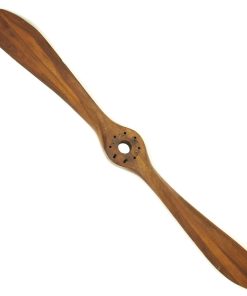Original French WWI Salmson 2 A2 reconnaissance Aircraft Propeller circa 1918 Original Items
$ 995,00 $ 248,75
Original item: One Only. Developed based on 1916 requirements, the Salmson 2 A2 was a French biplane reconnaissance aircraft developed and made by the French firm of Société des Moteurs Salmson. It was in fact the most widely used reconnaissance aircraft in the final year of the war. A versatile two-seater biplane featuring a new Canton-Unné radial engine, it was also employed as a daylight bomber and ground attack aircraft by French and American air services. At the end of the First World War, one-third of French reconnaissance aircraft were Salmson 2s.
The Salmson 2 developed from a requirement to replace the Sopwith 1½ Strutter and Dorand A.R. reconnaissance aircraft in the A2 (tactical reconnaissance) role. Salmson had built the 1½ Strutter under license, and the Salmson 2, while an original design, owed more to the Sopwith than to the earlier Salmson-Moineau. The aircraft was of conventional construction with a two-bay biplane configuration, powered by the company’s own Salmson 9Z water-cooled radial engine of 230 bhp. Some minor control problems were quickly resolved in early testing, but the main defect of the Salmson 2, shared with the contemporary Airco DH.4, was that the pilot and gunner were seated rather far apart, making communication difficult. Production was ordered after trials on 29 April 1917, and deliveries were underway by October of that year. Around 3,200 Salmson 2s were built in France, 2,200 by Salmson and the remainder by the Latécoère, Hanriot, and Desfontaines, companies
This propeller is made from 5 laminates of hardwood, most likely walnut or mahogany, the preferred woods for propellers. The overall length is 6 feet 9 inches. The markings on the central portion indicate that it probably was fitted to several different airplanes over the years, as there are also two sets of bolt holes. One side is manufacturer marked for Salmson:
SAL
CU 260
The other side of the hub has several rows of overstamped markings, but does have No 3749 stamped twice. Overall a great chance to have a magnificent display piece from Ww1 for the wall.
Fast Shipping with Professional Packaging
Thanks to our longstanding association with UPS FedEx DHL, and other major international carriers, we are able to provide a range of shipping options. Our warehouse staff is expertly trained and will wrap your products according to our exact and precise specifications. Prior to shipping, your goods will be thoroughly examined and securely secured. We ship to thousands clients each day across multiple countries. This shows how we're dedicated to be the largest retailer on the internet. Warehouses and distribution centres can be located throughout Europe as well as the USA.
Note: Orders with more than one item will be assigned a processing date depending on the item.
Before shipping before shipping, we'll conduct a thorough inspection of the items you have ordered. Today, the majority of orders will be delivered within 48 hours. The delivery time will be between 3-7 days.
Returns
The stock is dynamic and we cannot completely manage it because multiple stakeholders are involved, including our factory and warehouse. So the actual stock may alter at any time. It's possible that you may not receive your order once the order has been made.
Our policy is valid for a period of 30 days. If you don't receive the product within 30 days, we are not able to issue a refund or an exchange.
You can only return an item if it is unused and in the same state as the day you received it. You must have the item in its original packaging.
Related products
Uncategorized
Uncategorized
Uncategorized
Armoured Fighting Vehicles of the World: AFVs of World War One (Hardcover Book) New Made Items
Uncategorized
Uncategorized
Uncategorized
Uncategorized
Uncategorized
Uncategorized
Uncategorized
Armored Burgonet Helmet & Polearm from Scottish Castle Leith Hall Circa 1700 Original Items
Uncategorized
Uncategorized
Australian WWII Owen MK1 Machine Carbine SMG Custom Fabricated Replica with Sling Original Items
Uncategorized
Uncategorized
Uncategorized
Angolan Rebel 1970s era 60mm Inert Display Mortar from Angolan Civil War Original Items
Uncategorized
Uncategorized
